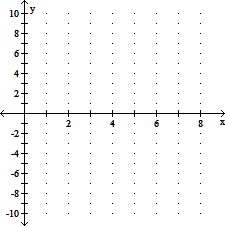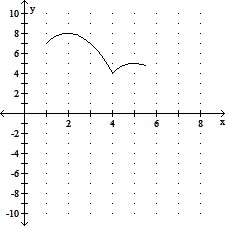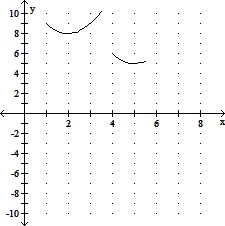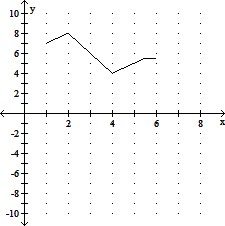Use Descartes' Rule of Signs to determine the possible number of positive and negative zeros of  .
.
A. 3 positive reals or 1 positive real; 3 negative reals or 1 negative real
B. 3 positive reals or 1 positive real; no negative reals
C. 0 positive real; 3 negative reals or 1 negative real
D. 1 positive real; 3 negative reals or 1 negative real
E. no positive reals; no negative reals
Answer: C
You might also like to view...
Sketch the graph of a function with the given properties.f is continuous but not necessarily differentiable, has domain [1, 5.5], reaches a maximum of 8 (attained when x = 2) and a minimum of 4 (attained when x = 4). Additionally, x = 2 and x = 5 are the only stationary points.
A. 
B. 
C. 
D. 
Multiply.(2p4r2)(-5p2q3)(-q3r4)
A. 10p8q6r8 B. -10p8q6r8 C. 10p6q6r9 D. 10p6q6r6
Solve the problem.The area of a triangle is given byA =  ab sin C,where a and b are the lengths of two of the sides and C is the included angle. If
ab sin C,where a and b are the lengths of two of the sides and C is the included angle. If 

 and C is an acute angle, what must C be? Give your answer in degrees to the nearest hundredth.
and C is an acute angle, what must C be? Give your answer in degrees to the nearest hundredth.
A. 53.66° B. 26.83° C. 126.34° D. No such triangle exists.
Simplify the expression. Assume all variables represent positive real numbers.
A. 
B. 
C. 
D. 